Have you ever felt that your dog is on its best behavior when you are around but starts displaying signs of stress and recklessness when left alone? Are you tired of cleaning the mess when you come home when your dog starts causing destruction?
Fear not! Many dog owners encounter the same type of problem. These are the typical signs of separation anxiety in dogs. Yes indeed, your dog is probably struggling with separation anxiety whilst he is alone.
What is Dog Separation Anxiety? – Find out from Veterinary Behaviorist
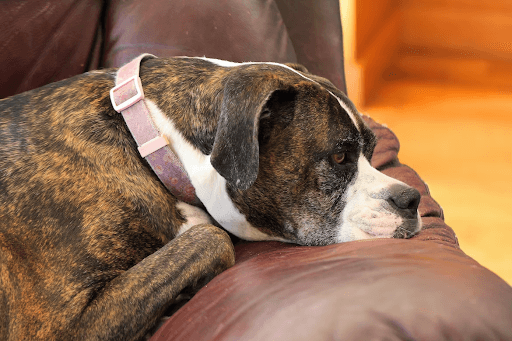
According to veterinary behaviorists, separation anxiety occurs in dogs that are very attached to their owners.
When the owner leaves the house or leaves the dog for either small or extended periods of time, it becomes anxious and may lead to developing signs of separation anxiety. They start behaving very differently and get anxious. This is undoubtedly a source of considerable stress for the dog owner, and in a way, the dog transmits anxiety.
Whatever time you leave, you come back to witness the destruction of some of your possessions. Make no mistake: it is a big deal when a dog starts developing separation anxiety and it is not treated adequately through proper supplementation
The good thing, however, is that you can understand the cues and symptoms, tackle them before they get out of hand, and teach your dog to curb his anxiety and better adapt with moments of separation from its owner.
Signs of Separation Anxiety – Understand Your Dog’s Behavior
Different dogs exhibit different symptoms while showing their separation anxiety. The common behavioral symptoms of anxiety in pets, especially dogs are:
- Excessive barking: repeated barking, or other vocalizations when being left alone, such as howling or whining, is one of the most obvious indicators of separation anxiety.
- Trembling, whining, pacing here and there as the dog owner is about to depart the house.
- Dogs suffering from separation anxiety start building up stress and may try to escape the house when left alone, and in doing so, can seriously harm themselves.
- Some dogs, when left in the house, can suffer from coprophagy. Coprophagy is the act of a dog eating its own feces. It is one of the most extreme displays of both stress and separation anxiety.
If you are worried about your puppy, we are here for you. We understand that for most dog owners, a puppy is pretty much akin to a family member. Separation anxiety shouldn’t be seen by dog owners as an irredeemable problem, or a terminal disease. Quite the opposite.
There are an abundance of training methods and solutions within your reach in order for you to help calm your dog and help them lead a healthier lifestyle from a physical and mental standpoint.
How to Deal with Dogs with Separation Anxiety – Treatment and Remedies
There can be any reason that your dog develops separation anxiety. It can be a change of guardian, a change in their schedule or even a change of residence. Whatever the reasons are, the following tips will ensure that your puppy overcomes separation anxiety.
Focus on Gradually Decreasing Spend Time Together
Dog separation anxiety occurs when the dog is left alone. The easiest way to reduce your dog’s separation anxiety is gradually increasing the alone time of your pet. This is to make your pet understand that it is going to be away from you.
You can start with a few minutes a day. Make your dog sure about your departure. Initially, you don’t need to actually go. You can go to another room and act like you are away. Increase the time gradually to teach your dog to adapt to this new situation.
This is a form of training that the dog must get. It should feel like you are out of the house. Starting from a few minutes a day, increase the time duration.
Crate Training

Crate training starts when your dog is a puppy. The crate is a safe space for your pet to calm down and relax. A dog may be anxious at the idea of your departure. Many dogs know that when their owner is busy, they can resort to their personal crate to calm down and decompress.
Additionally, keep a few toys in the crate so that the dog can settle in it easily.
Crate training depends greatly on the amount of time you are away. We can’t expect the puppy to stay in the crate for 2-3 hours at a stretch. So, time your departures wisely.
Crate training caution!
Keep in mind, however, that crate training is not some magical solution that will solve separation anxiety overnight. It all boils down to how and when dog owners use crates are a reliable solution.
For example, it would be best if crates are never used for coercive punishment. They should only be used to manage the behavior of your dog, keep his temper in check and reduce the risk of separation anxiety.
For the sake of argument, if you’re expecting guests to come over to your house, put your dog in a crate with interactive toys, rather than mingling with the guests, starting to get slightly jumpy, breaking a plate, and then confine him to the crate as a form of punishment.
Give a Treat
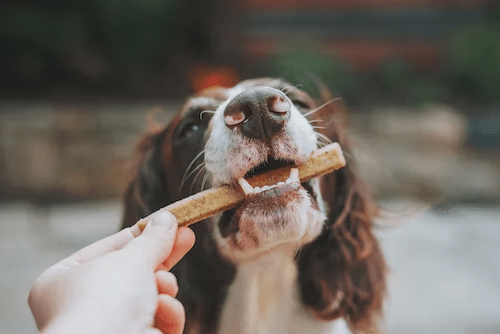
Give your dog a treat to reduce the effects of separation anxiety. You need to teach your dog that whenever you go, it will be a routine that you give it a treat.
A treat can be anything your puppy likes. It can be its favorite toy drizzled in a big scoop of peanut butter.
Or, it could be that the dog sleeps with you in your bed when you come home. Anything that helps in calming the dog down and making it realize that you are going away is a normal routine in life.
Exercise Well
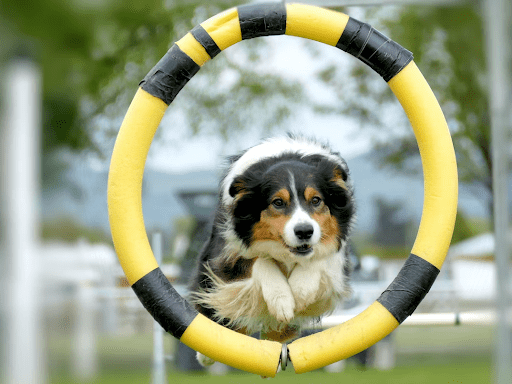
Dogs that are physically active and play inside and outside don’t tend to show separation anxiety even when faced with the same causes as other dogs that face a similar predicament.
In case your dog’s routine isn’t involving active physical exercise, it is high-time to disrupt said routine. With that in mind, give your canine companion 30 minutes of aerobic exercises on a daily basis; for instance, running, and if possible, swimming.
Alternatively, or even simultaneously, play fun, interactive games with your dog, such as fetch or tug-of-war. The key point is that you need to provide lots of physical stimulation, which is a vital part of treating your dog’s behavioral problems associated with separation anxiety.
In essence, take your dog out for exercise as much as you can. Train your dog to be physically fit. This is an excellent and a very healthy family activity.
Calming Drinks

If your dog is barking unnecessarily or shows signs of anxiety when you begin to leave, a good soothing drink will help it settle down.
Resources show that the proper food and drinks can help a dog’s behavior. Wolf Spring Calming Drink is something every dog owner should have. It will make your life easy and you can leave your dog at home without worrying too much about your dog’s state of mind in general, and separation anxiety in particular.
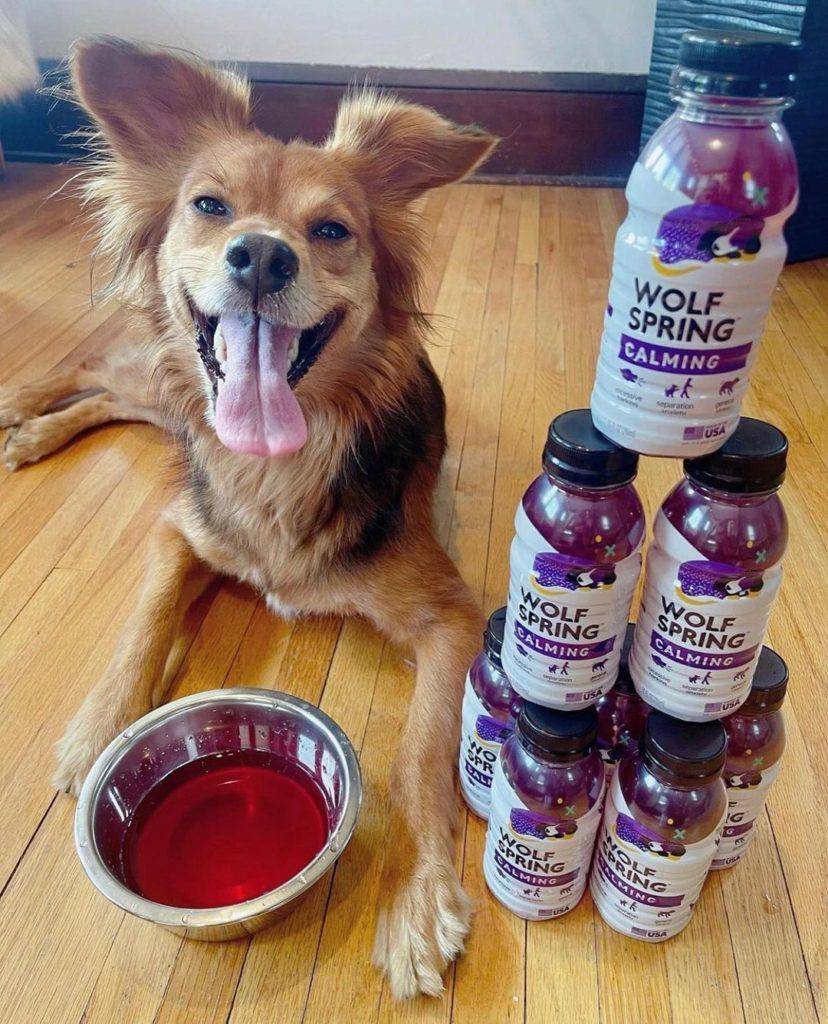
Surely, you will come back to your house to a happy puppy, who went through a phase of separation, yet suffered little to no anxiety.
Avoid Clinginess
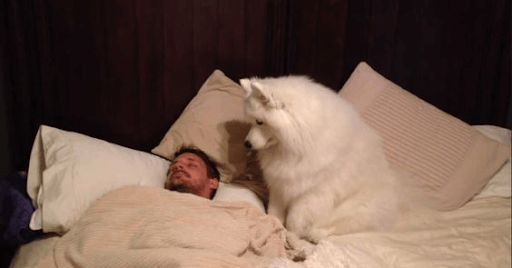
A part of training should be to stop your dog from being too clingy and unwilling to accept separation. It is imperative that you teach your dog that this type of behavior must change.
You can start by letting your dog be in another room when you are home. Put your dog’s bed and toys somewhere else so the dog knows it needs to be alone at times. You might want to give a different room to the dog for a few days.
This will also show you any cues of dog separation anxiety, giving you time to train your dog before they get worse.
Conclusion
For pet owners, dogs are just like family members. Understanding dogs and their behavior is by no means an easy fit. Quite the opposite. Leaving your dogs for long periods of time can worsen their anxiety.
Initial and mild cases of separation anxiety can be dealt with at home. Dogs’ behavioral patterns, or certain aspects in their training that cause separation anxiety to emerge, can be controlled if they are mild. A little training and effort from your side can help your dog overcome this problem.
For the more severe cases of dog separation anxiety, you must visit a veterinarian. You must understand that this can turn into a lengthy process, and dedicate a chunk of your time for your dog’s treatment.
There are many resources at your disposal that can help you settle problems related to separation and anxiety, and instill a sense of tranquility and security in a dog’s daily life when you’re gone.
Ultimately, when it comes to tackling separation anxiety, the objective is to solve the actual problem, not the cues and symptoms. For it is by solving the actual problem that helps your dog lead a healthy lifestyle.